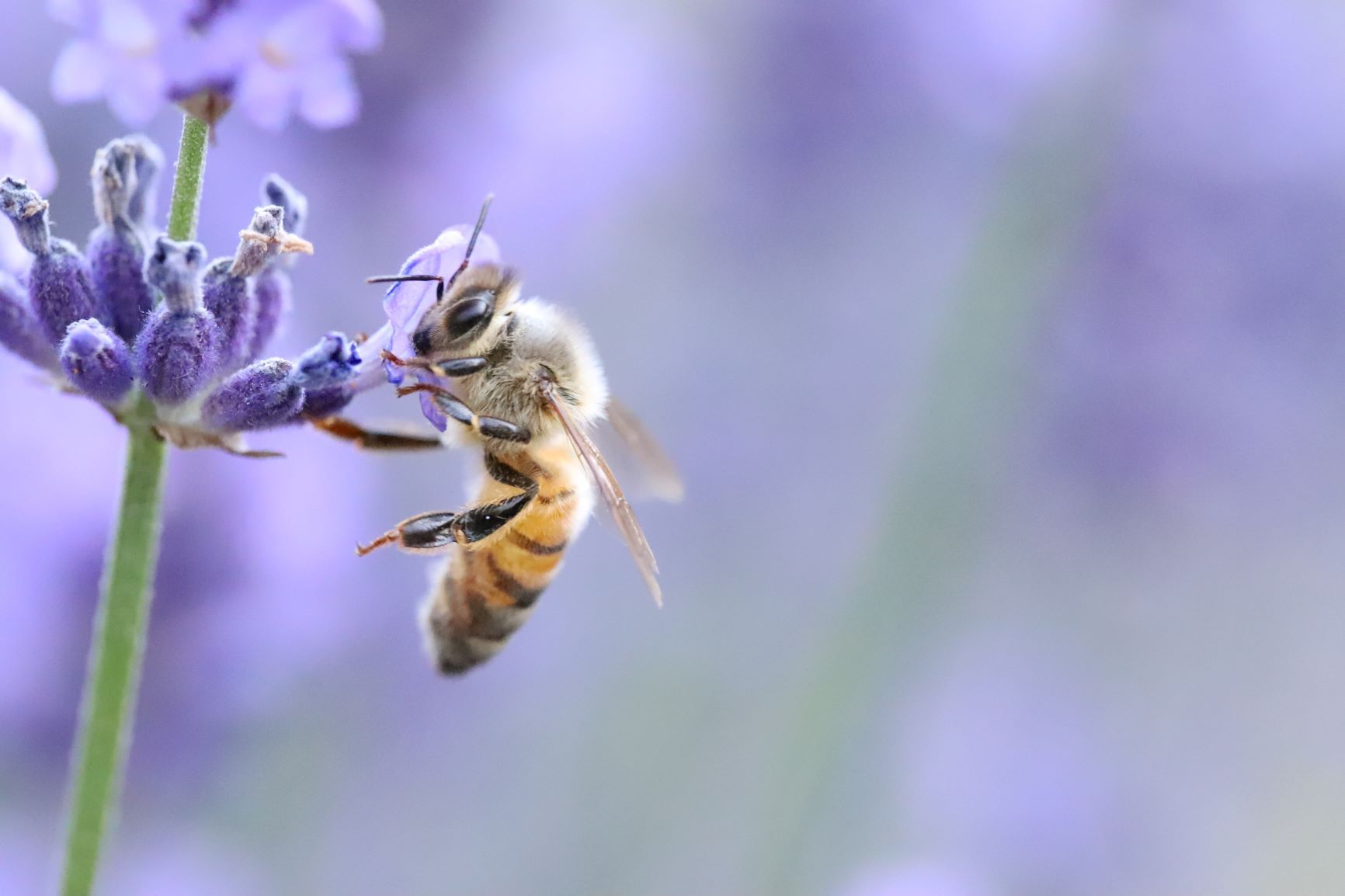This morning, sitting outside and having breakfast I was drawn by a couple of bees hovering over one of our flowering bushes (don’t ask me its name I am useless at remembering what we have bought and planted) and it reminded me of something I had come across whilst researching a piece I was writing on pollution.
Honeybees are one of nature’s highly sensitive environmental monitoring devices; they have evolved over the years with tiny hairs all over their legs and bodies and as they fly along these become electrostatically charged and hoover up all sorts of small particles, debris and pollen. So, it came as quite a shock to read about a study about microplastics in Denmark in the journal, Science of the Total Environment, which found that 13 different synthetic polymers had been found on the hairs of honeybees.
Most of us have heard of microplastics being found in our oceans, however I hadn’t readily transferred this thought into the fact that they are airborne and all around us. But that is exactly what is happening. Litter that makes its way down river to the sea, left on our beaches or roadsides is being broken down by the rivers, waves and traffic and blown around in our atmosphere as microplastic particles.
The Danish study, which took place in Copenhagen and surrounding rural areas, found that because our hairy friends are one of nature’s great foragers and travel long distances each day, encountering water, soil, air and plants, they are ideal bio sensors. The results were pretty interesting; of the plastic particles that were recovered 52% were fragments and 38% fibres. Polyester was the main material, followed by polyethylene and PVC. One thing that surprised the team was that the returns for rural bees were not much lower than city bees, meaning that the air was much more important in dispersing microplastics than one may have thought.
So, what can we do? As Boldies most of us take a keen interest in the natural world around us and take a proactive environmental stance. I for one don’t want to pop off this mortal plane without believing I have done some positive good to leave the planet in a better place for our grandchildren (as a complete aside our daughter is expecting her first child, our first grandchild later this year – so there is great excitement in our household at the moment). Many Boldies enjoy gardening and seek out the latest thinking on nature friendly feeds and soil enhancers, as well as looking at how to protect our plants. We are conscious about the energy we use and some of us are even investing in renewable energy sources such as solar voltaic panels and ground source heat pumps. All that is great but another brilliant way to get involved on a practical level is to organise or take part in local community litter picks and for those who are more energetic there is ‘plogging’ a form of litter picking whilst jogging. But by far the most important thing to do is not to walk past a piece of wayward plastic litter, pick it up and put it in the nearest recycling bin. Not only is it the right thing to do but hopefully other people will see you take that one simple action and, just maybe, it will encourage them to do the same. Before you know it we will have started a Boldie trend between us.
